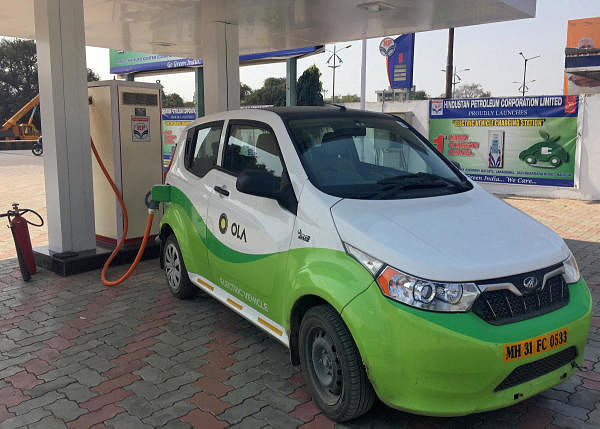
All said and done, Indians are just not buying electric vehicles. Throwing good money to address the demand-side of the challenge alone is an idea that has clearly failed.
Tabling her maiden budget in Parliament on Friday, Minister for Finance Nirmala Sitharaman gave it another go. She proposed a cut in tax from 12 per cent to 5 per cent and a rebate on tax of up to Rs 1.5 lakh year to be offset against interest paid on money borrowed for buying electric vehicles (EVs).
Union Budget 2019 | Get the live news updates, views & analysis here
Broadly, both these measures are fiscal, aimed at creating demand for EVs in the country. The government’s 2nd edition of FAME programme or Faster Adoption and Manufacturing of (Hybrid &) Electric Vehicles that is expected to cost Rs 10,000 crore is already in the works. Roughly., Rs 8,600 crore of this will be used to incentivise the purchase of electric buses, cars, and trucks used for public transport and around Rs 1,000 crore for setting up charging stations as part of a national network of EV-supporting infrastructure.
Fiscal incentives, whether it is budgeted or ad hoc, to incentivise demand for electric vehicles is nothing new. What is also not new is the fact that it has not worked in the past and there is particularly no reason for it to work this time. In a country where a rupee increase in petrol or diesel prices can trigger violent public protest followed by trade strikes, fiscal tinkering that tries to make economic sense of buying an electric vehicle is simply not going to work.
As one of the world’s largest market for cars, bikes (and trucks and three-wheelers), demand for vehicles has never been a big issue in India. Today Indians buy over 20 million two-wheelers and around three million cars every year because for most the cost and benefit are fairly well matched. The two-wheeler revolution happened in India because companies like Hero Honda offered a relatively affordable motorcycle that will run for over 100 plus kms on a litre of petrol. The same can be said about cars, thanks to Maruti 800 that brought four wheelers closer to the average Indian household without expecting them to break a bank.
For all practical purposes, the market for electric vehicles in India is non-existent. Of 25 million new vehicles we sell a year, less than 70,000 or around 0.30% is electric. This is not even a drop in the Indian ocean. The global sales of EVs are around 2.2 million with more than half bought by the Chinese. Every month China sells nearly twice as many EVs as India does in an entire year.
The relatively large market for EVs in China has been built on massive government spending (including incentivising purchases and also enabling manufacturers). By some estimates, China has spent over $ 60 billion over the past decade to create its EV market. Compared to this, India’s FAME 2 that will span over three years will cost less than $1.5 billion (Rs 10,000 crore).
The single biggest reason for unenthusiastic demand for EVs is cost. A typical electric car or two-wheeler costs at least twice as much as its gasoline version. Then there is the issue of charging infrastructure to tackle ‘range anxiety’ -- vehicle running out of battery with no charger close by. There are less than 500 charging stations in India, compared to 7,000 in China plus another six lakh private charging piles. So with high initial capital cost and not having enough places to charge, why would Indians buy EVs?
What the finance minister (like many of her predecessors) has tried to do is tackle the ‘total cost of ownership’ or TCO that includes capital and running costs. Tinkering with taxes is unlikely to help. The elephant in the room is the cost of the battery pack in EVs that has been steadily dropping over the years from more than $ 600-700 per kilowatt hour some seven years ago to less than $ 250 today. It is not too farfetched to expect this to reach a tipping point where the parity between EV and gasoline vehicles will be achieved without any financial incentives to promote cleaner vehicles.
The current round of budgetary incentives will at best result in some marginal improvement in EV sales in India. But don’t hold your breath waiting for the air coming out of vehicles in India to get cleaner anytime soon.
(Kalyan Subramani is a Bangalore-based writer)
The views expressed above are the author’s own. They do not necessarily reflect the views of DH.